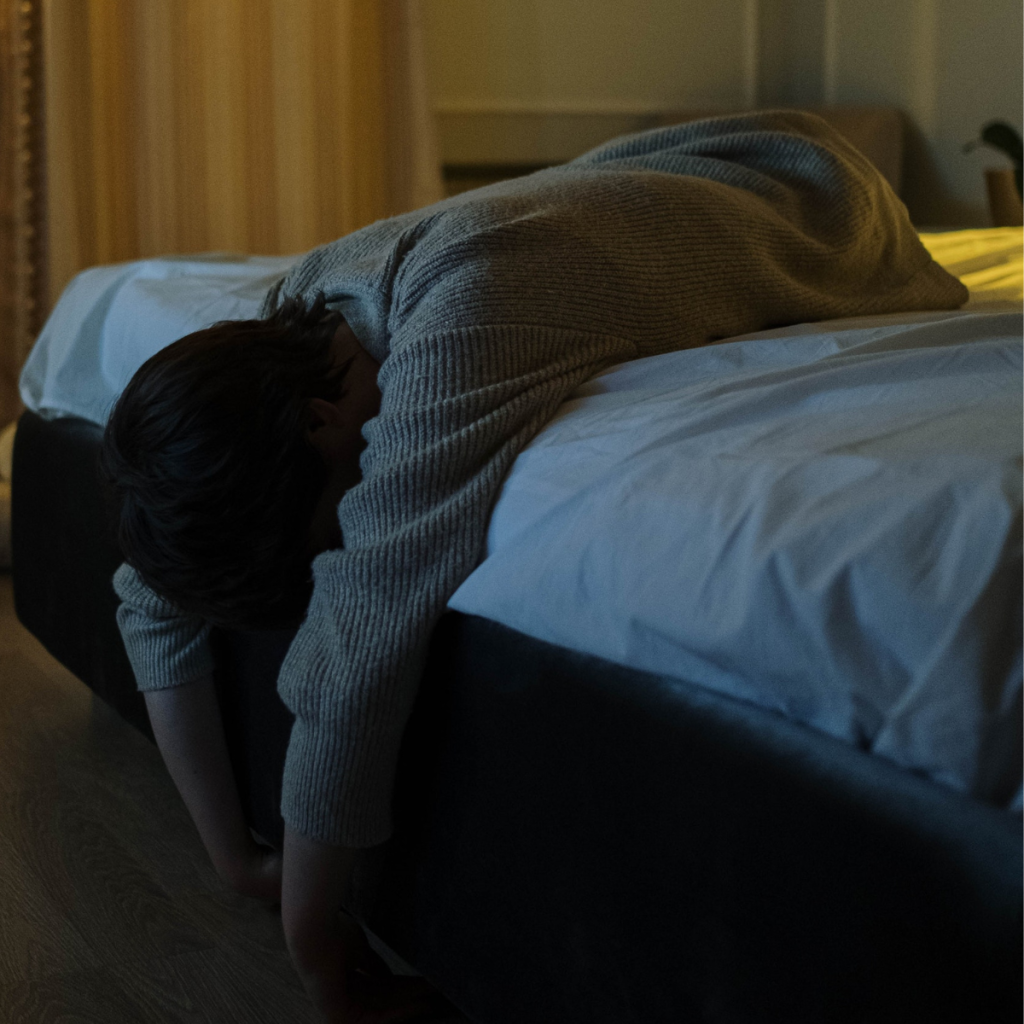Discover effective relaxation techniques to alleviate back tension and promote better sleep.
Relaxation Techniques to Reduce Back Tension Before Sleep
Do you often find yourself tossing and turning in bed, unable to relax and drift off to sleep? If so, you might be surprised to learn that back tension could be to blame. That’s right, those knots and tightness in your back can wreak havoc on your sleep quality. But fear not, because in this article, we’ll explore the connection between back tension and sleep and share some effective relaxation techniques to help you unwind and prepare for a restful night’s sleep.
Understanding Back Tension and Its Impact on Sleep
Have you ever woken up feeling even more tired than when you went to bed? Back tension could be the culprit. When we experience stress or spend long hours sitting at a desk, the muscles in our back can become tight and strained. This tension not only affects our posture throughout the day but can also make it difficult to relax and fall asleep at night.
But what exactly is back tension, and how does it impact our sleep? Let’s delve deeper into this topic to gain a better understanding.

The Connection Between Back Tension and Sleep Quality
Did you know that your sleep quality is directly influenced by the state of your back? When your back muscles are tense, it’s harder for your body to find a comfortable position and fully relax. As a result, you may experience sleep disruptions, frequent waking during the night, or even wake up feeling stiff and sore.
Imagine trying to sleep on a bed of rocks – it’s nearly impossible to find a restful position, right? Similarly, when your back is tense, your body struggles to find the optimal sleeping posture, leading to discomfort and disturbed sleep.
Furthermore, the tension in your back can also affect your breathing patterns during sleep. When your muscles are tight, it can restrict your diaphragm’s movement, making it harder to breathe deeply and fully. This shallow breathing can result in less oxygen intake, leaving you feeling fatigued and groggy in the morning.
Common Causes of Back Tension
Back tension can arise from various factors, including poor posture, sitting for extended periods, stress, and physical strain. It’s essential to recognize the root causes of back tension in order to address and relieve it effectively.
Poor posture is a significant contributor to back tension. When we slouch or hunch over, it puts excessive strain on our back muscles, leading to tension and discomfort. Additionally, sitting for long hours without breaks can exacerbate this issue, as our muscles become stagnant and fatigued.
Stress is another common cause of back tension. When we are stressed, our bodies tend to hold tension in various areas, including the back. This tension can build up over time, affecting our sleep quality and overall well-being.
Physical strain, such as lifting heavy objects or engaging in strenuous activities without proper form, can also result in back tension. It’s crucial to prioritize proper body mechanics and use ergonomic techniques to prevent unnecessary strain on our back muscles.
By identifying the causes of back tension in our lives, we can take proactive steps to alleviate it and improve our sleep quality. Incorporating regular exercise, practicing stress management techniques, maintaining good posture, and seeking professional help when needed are all effective strategies for reducing back tension.
So, the next time you find yourself tossing and turning in bed, unable to find a comfortable position, remember the impact that back tension can have on your sleep. By addressing and managing this tension, you can pave the way for a more restful and rejuvenating night’s sleep.
The Importance of Relaxation Before Sleep
Before we delve into the different techniques for reducing back tension, let’s first explore why relaxation is crucial for a good night’s sleep.
Getting a good night’s sleep is essential for overall well-being and optimal functioning. However, in today’s fast-paced and stressful world, many people struggle to unwind and relax before bedtime. This is where the importance of relaxation techniques comes into play.
The Role of Relaxation in Sleep Quality
Relaxation is the key to preparing your body and mind for a peaceful slumber. When we relax, our bodies release tension and stress, allowing us to enter a state of calmness. This calm state is essential for falling asleep faster, enjoying a deeper sleep, and waking up feeling refreshed and rejuvenated.
Engaging in relaxation techniques before sleep can help signal to your brain that it’s time to wind down and prepare for rest. By incorporating activities such as deep breathing exercises, progressive muscle relaxation, or meditation, you can create a peaceful environment that promotes relaxation and sleep.
Furthermore, relaxation techniques have been found to reduce the production of stress hormones such as cortisol, which can interfere with sleep. By reducing stress levels, relaxation helps to regulate the body’s natural sleep-wake cycle, allowing for a more consistent and restful sleep pattern.
How Relaxation Affects Back Tension
By incorporating relaxation techniques into your nightly routine, you can specifically target and alleviate back tension. As you relax, the muscles in your back loosen, and blood flow increases, promoting healing and reducing discomfort.
Back tension is a common issue for many individuals, especially those who lead sedentary lifestyles or engage in physically demanding activities. It can lead to discomfort, pain, and even sleep disturbances. However, by dedicating time to relax and release tension in the back muscles, you can experience significant relief.
There are various relaxation techniques that can specifically target back tension. For example, practicing gentle stretching exercises before bed can help elongate and relax the muscles in your back, relieving tightness and improving flexibility. Additionally, using heat therapy, such as a warm bath or heating pad, can help soothe sore muscles and promote relaxation.
It’s important to note that relaxation techniques alone may not be sufficient for addressing chronic or severe back pain. If you experience persistent or worsening symptoms, it is advisable to consult with a healthcare professional for a comprehensive evaluation and appropriate treatment options.
In conclusion, incorporating relaxation techniques into your pre-sleep routine is essential for promoting a good night’s sleep and reducing back tension. By creating a calm and peaceful environment, you can prepare your body and mind for rest, allowing you to wake up feeling refreshed and ready to tackle the day ahead.
Different Relaxation Techniques for Back Tension
Now that we understand the importance of relaxation before sleep, let’s explore some effective techniques that will help melt away back tension and prepare you for a night of deep, restorative sleep.
Breathing Exercises for Back Relaxation
One simple and powerful technique for reducing back tension is deep breathing exercises. By taking slow, deep breaths, you allow your body to relax and release stress. As you breathe in, visualize tension leaving your body, and as you exhale, envision tension melting away from your back muscles.
Deep breathing not only helps relax your back muscles but also promotes a sense of calmness throughout your entire body. As you focus on your breath, you may notice your heart rate slowing down and your mind becoming more peaceful. This technique can be done anywhere, at any time, making it a convenient tool for managing back tension on the go.
In addition to deep breathing, you can enhance the relaxation experience by incorporating aromatherapy. Certain scents, such as lavender or chamomile, have been shown to have a calming effect on the body and mind. Consider using essential oils or scented candles during your breathing exercises to create a soothing atmosphere that promotes relaxation.
Progressive Muscle Relaxation
An effective technique that targets not only your back tension but also your entire body is progressive muscle relaxation. Start by tensing specific muscle groups, such as your back, and then slowly release the tension while focusing on the feeling of relaxation. Repeat this process for each muscle group, from head to toe, and feel the stress melt away.
Progressive muscle relaxation is a systematic approach to releasing tension from your body. It helps you become more aware of the physical sensations associated with stress and allows you to consciously let go of that tension. As you practice this technique regularly, you may find that your back tension decreases over time, leading to improved sleep quality and overall well-being.
Incorporating soothing music or nature sounds can further enhance the relaxation experience during progressive muscle relaxation. The gentle melodies or calming sounds can create a peaceful ambiance that complements the physical relaxation process, helping you achieve a deeper state of tranquility.
Guided Imagery Techniques
Another enjoyable relaxation technique is guided imagery. Close your eyes and imagine yourself in a peaceful, serene place. It could be a beach, a forest, or any location that brings you a sense of tranquility. As you visualize this calming environment, let your back muscles relax and release tension, allowing you to drift off into a blissful sleep.
Guided imagery is a form of meditation that uses visualization to promote relaxation and stress reduction. By creating vivid mental images of pleasant and calming scenes, you engage your senses and redirect your focus away from the stresses of daily life. This technique can be particularly effective for relieving back tension, as the mind-body connection plays a significant role in muscle relaxation.
Consider incorporating soft, ambient sounds, such as gentle waves or rustling leaves, into your guided imagery practice. These background sounds can further immerse you in the imagined environment, enhancing the overall relaxation experience and promoting a more restful sleep.
Remember, relaxation techniques are not a one-size-fits-all solution. It’s essential to explore different methods and find what works best for you. Experiment with these techniques and make adjustments to suit your preferences and needs. With consistent practice, you can effectively manage back tension and enjoy the benefits of a rejuvenating night’s sleep.
Incorporating Relaxation Techniques into Your Nightly Routine
Now that you have an arsenal of relaxation techniques, it’s time to integrate them into your nightly routine for optimal results.

Creating a Relaxing Sleep Environment
Start by creating a sleep environment that promotes relaxation. Clear away clutter, dim the lights, and incorporate soothing elements such as calming scents, soft lighting, or gentle music. By setting the stage for relaxation, you signal to your body and mind that it’s time to unwind.
Timing Your Relaxation Techniques
Experiment with different times to find what works best for you. Some individuals prefer to practice relaxation techniques right before bedtime, while others find benefit in incorporating them earlier in the evening. Regardless of when you choose to relax, consistency is key. Make it a habit, and your body will learn to associate these techniques with preparing for sleep.
Evaluating the Effectiveness of Relaxation Techniques
As you embark on your journey to reduce back tension and improve your sleep, it’s essential to pay attention to the subtle signs that indicate your relaxation techniques are working.
Signs Your Relaxation Techniques Are Working
Keep an eye out for signs of progress, such as improved sleep quality, reduced back pain and tension, and waking up feeling refreshed. These are clear indicators that your relaxation techniques are positively impacting your overall well-being.
Adjusting Your Techniques for Better Results
If you find that certain relaxation techniques aren’t providing the desired outcome, don’t be discouraged. Experiment with different techniques or adjust the intensity and duration of the exercises. Remember, relaxation is a personal journey, and finding what works best for you may require some trial and error.
In conclusion, addressing back tension is critical for achieving a restful night’s sleep. By understanding the connection between back tension and sleep quality, incorporating relaxation techniques into your nightly routine, and evaluating their effectiveness, you can finally banish back tension and enjoy the peaceful slumber you deserve. So, take a deep breath, relax those back muscles, and prepare for a blissful night of sleep like no other!



